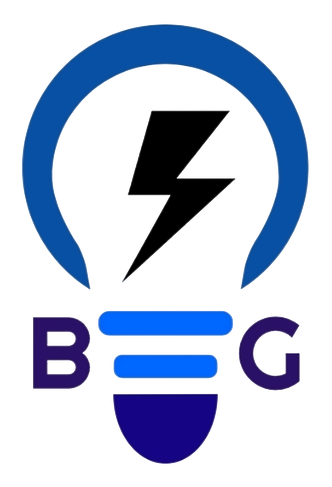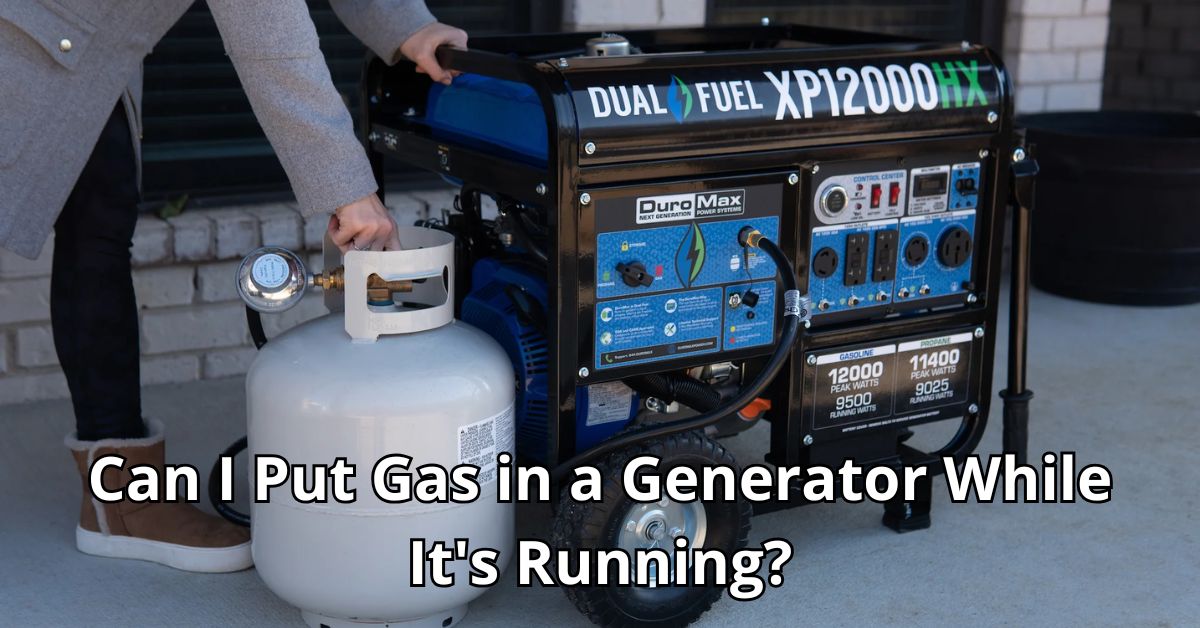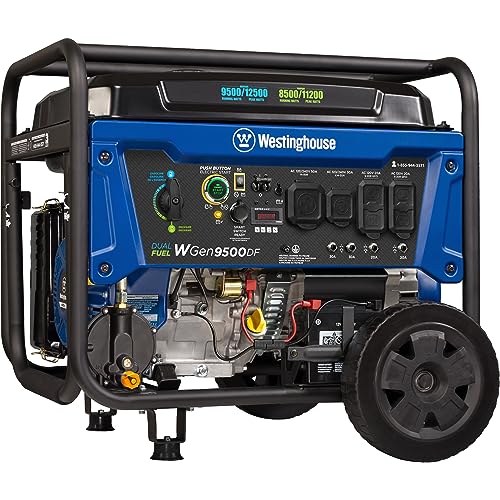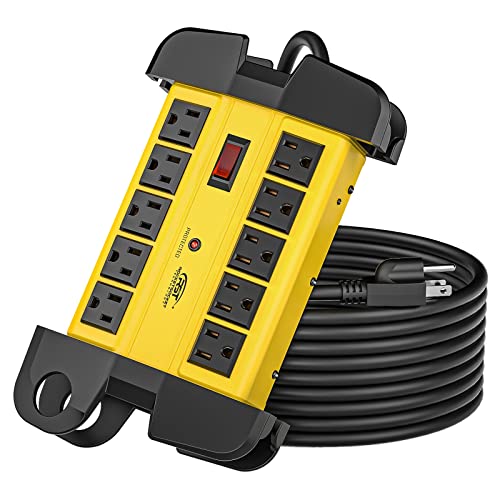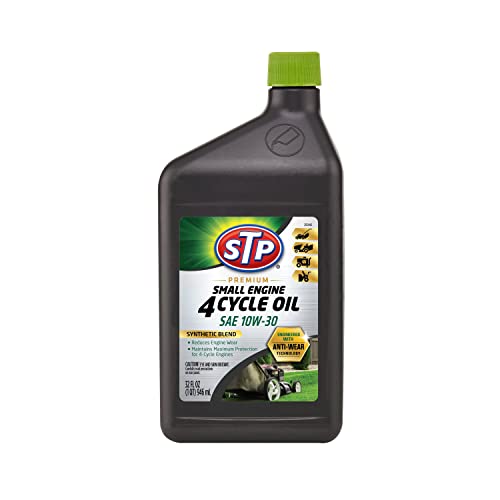Can I Put Gas in a Generator While It’s Running: Safety Tips
No, you should not put gas in a generator while it’s running. It is dangerous and can lead to accidents.
Generators are crucial during power outages. They keep essential appliances running and provide comfort. But using them safely is vital. Refueling a running generator can be risky. It might cause a fire or explosion. Gasoline vapors are highly flammable. When the generator is hot, these vapors can ignite easily.
It’s important to understand the proper way to refuel. This ensures safety and prolongs the life of your generator. In this blog post, we will discuss the correct steps for refueling your generator. Stay safe and keep your generator in good condition by following these guidelines.
Understanding Generator Operation
Knowing how your generator works is essential. It helps ensure safety and efficiency.
This section will break down the basic functioning and fuel types of generators.
Basic Functioning
Generators convert mechanical energy into electrical energy.
Internal combustion engines usually power them.
The engine drives a rotor, which spins within a stationary coil. This motion creates electricity through electromagnetic induction.
Generators have two main parts: the engine and the alternator.
The engine burns fuel to create mechanical energy.
The alternator converts this mechanical energy into electrical energy.
This electricity then powers your home or devices.
Fuel Types And Usage
Generators can use various fuel types. Common fuels include gasoline, diesel, propane, and natural gas.
| Fuel Type | Advantages | Disadvantages |
|---|---|---|
| Gasoline | Easy to find, high power output | Short shelf life, flammable |
| Diesel | Efficient, long shelf life | Expensive, noisy |
| Propane | Clean burning, long shelf life | Lower power output, requires storage tank |
| Natural Gas | Unlimited supply, clean burning | Requires gas line, lower power output |
Gasoline is common for portable generators. It’s easy to find but has a short shelf life. It’s also highly flammable.
Diesel is efficient and has a long shelf life. But it’s more expensive and noisier.
Propane burns clean and stores well. It has a lower power output and needs a storage tank.
Natural gas offers a clean burn and unlimited supply. It requires a gas line and has a lower power output.
Risks Of Refueling While Running
Refueling a generator while it’s running can be dangerous. It’s essential to understand the risks involved. This practice can lead to serious accidents and even life-threatening situations. Let’s explore the main risks in detail.
Fire Hazards
Refueling a running generator poses a significant fire hazard. Gasoline is highly flammable. When adding gas to a hot engine, even a small spill can ignite. Sparks from the engine can also ignite the fumes, leading to a fire. These fires can quickly become uncontrollable.
| Risk | Explanation |
|---|---|
| Sparks | Sparks from the engine can ignite gas fumes. |
| Spills | Spilled gasoline can catch fire easily. |
Health Risks
There are also health risks associated with refueling a generator while it’s running. The fumes from gasoline are toxic. Inhaling these fumes can cause nausea, headaches, and dizziness. In severe cases, it can lead to loss of consciousness.
- Nausea: Gasoline fumes can make you feel sick.
- Headaches: Prolonged exposure can cause headaches.
- Dizziness: Inhaling fumes can make you feel dizzy.
Always allow the generator to cool down before refueling. This reduces the risk of accidents and health issues. Safety should always be your priority.
Proper Shutdown Procedures
Shutting down your generator correctly is crucial for its longevity and safety. It’s essential to follow the proper shutdown procedures to avoid any potential hazards. Below, we will guide you through the necessary steps to ensure your generator is shut down safely and efficiently.
Step-by-step Guide
- Turn off all electrical appliances: Before shutting down the generator, make sure to disconnect all devices connected to it. This helps prevent any power surge or damage.
- Switch off the generator: Locate the generator’s power switch and turn it to the “Off” position. This stops the engine from running and begins the shutdown process.
- Close the fuel valve: After the engine stops, close the fuel valve to prevent any fuel leakage.
- Disconnect the battery: If your generator has a battery, disconnect it to avoid any electrical discharge.
Cooling Down Period
After shutting down the generator, it is important to let it cool down. The engine and other components can get very hot during operation. Here are steps to ensure a proper cooling down period:
- Wait for at least 15 minutes: Allow the generator to sit for a minimum of 15 minutes before handling or refueling.
- Check the temperature: Make sure that the generator is cool to the touch before performing any maintenance or refueling.
Following these proper shutdown procedures will keep your generator in good working condition and ensure your safety. Always prioritize safety and adhere to these guidelines for an efficient shutdown process.
Safe Refueling Practices
Refueling a generator while it’s running can be dangerous. It is important to follow safe refueling practices to avoid accidents. This section covers key steps for refueling your generator safely.
Location And Environment
Choose a safe location before refueling. Make sure the area is well-ventilated and free from flammable materials. This reduces the risk of fire.
Keep the generator on a flat surface. This prevents fuel spills, which can be hazardous. Avoid refueling indoors. Always refuel in an open space to prevent the buildup of harmful fumes.
Correct Fuel Handling
Use the correct type of fuel for your generator. Check the user manual for the recommended fuel type. Using the wrong fuel can damage your generator.
Before refueling, turn off the generator. Allow it to cool down to prevent fuel from igniting. Use a funnel to pour fuel into the tank. This helps to avoid spills.
Never overfill the tank. Leave some space for fuel to expand. Wipe any spilled fuel immediately. Ensure the fuel cap is tightly secured after refueling.
Follow these steps for safe refueling practices. This will keep you and your generator safe.
Emergency Situations
Generators provide crucial power during emergencies. But, refueling them while running can be dangerous. In emergencies, you might feel the urge to quickly refuel. Doing so can lead to serious accidents. Learn how to handle such situations safely.
What To Do If You Accidentally Refuel
If you accidentally refuel a running generator, turn it off immediately. Spilled fuel can ignite. Do not panic. Stay calm and proceed with caution. Keep flammable materials away from the area. Ensure you and others are safe.
Immediate Actions To Take
First, switch off the generator. Next, move away from the generator. Check for any fuel spills. Clean the area thoroughly. If you notice a fire, use a fire extinguisher. Call emergency services if needed. Always prioritize safety.
Maintaining Generator Safety
Maintaining generator safety is crucial for both your equipment and your well-being. Generators are powerful machines that require careful handling. Understanding safety procedures helps prevent accidents and prolongs the life of your generator. Let’s explore some key aspects of maintaining generator safety.
Regular Inspections
Regular inspections ensure your generator runs smoothly and safely. Check for any signs of wear and tear. Look for loose wires, oil leaks, or any unusual noises. Inspect the fuel system regularly. Ensure there are no cracks or damages in the fuel tank. Keeping an eye on these aspects can prevent potential hazards.
Safety Equipment And Tools
Using the right safety equipment and tools is essential. Always have a fire extinguisher nearby when operating your generator. Wear protective gear like gloves and safety glasses. Use proper tools for maintenance tasks. Avoid makeshift solutions as they can be dangerous. This ensures a safer environment for you and your equipment.
Frequently Asked Questions
Can You Refuel A Generator While It’s Running?
No, you should never refuel a running generator. It’s dangerous and can cause fires. Always turn off the generator and let it cool before adding fuel.
What Happens If You Add Gas To A Running Generator?
Adding gas to a running generator can cause a fire or explosion. Spilled fuel may ignite from hot surfaces or sparks.
How Long Should A Generator Cool Before Refueling?
Let the generator cool for at least 15 minutes before refueling. This ensures that all hot surfaces have cooled down, reducing fire risk.
Is It Safe To Keep Extra Fuel Near A Running Generator?
No, storing extra fuel near a running generator is unsafe. Fuel should be stored in a well-ventilated, cool area away from the generator.
Conclusion
Running a generator while refueling is dangerous. Always turn it off first. Safety is key. Fuel spills can cause fires or explosions. Follow the manufacturer’s guidelines. Use proper containers and tools for refueling. Allow the generator to cool down before adding gas.
These steps keep you and your equipment safe. Proper handling ensures a longer lifespan for your generator. Stay safe, be smart, and always prioritize safety when using generators.
